Caribbean script. Part 2
After the launch of the ICBM, the Soviet Far aviation. Thanks to dispersal at alternate aerodromes, most of the Tu-95, 3M, M-4, Tu-16 bombers and obsolete Tu-4 piston bombers survived. After ICBM attacks and the first attack of American bombers, more than 500 long-range vehicles remained in the Soviet Air Force, but only 150 aircraft could reach US territory and return. For 40 Tu-95K missile carriers, about a hundred X-20 supersonic cruise missiles were ready.
The first were jet Tu-16А, which did not have an intercontinental range, but could not be better suited for the bombing of American facilities in Europe, Asia and Alaska. NATO air defense in Europe after the nuclear missile strikes had gaps, so the loss of the bombers were relatively small. Only RAF pilots have fierce resistance. The batteries of the “Bloodhound” and “Thunderbird” anti-aircraft complexes, whose positions were located in the vicinity of British air bases, for the most part were destroyed or damaged by electromagnetic pulses from nuclear explosions, while the “friend-foe” radar system completely failed. For this reason, British interceptors were forced to produce visual target identification to prevent the destruction of American and British bombers returning after a raid on the USSR. The air defense of the British Isles is hacked after several launches of K-10C cruise missiles with nuclear warheads on interceptor airfields and surviving radars. After that, the Tu-16 under cover of noise breaks at a low altitude to the naval bases and the surviving airfields. Shipyards, aircraft manufacturers and major cities are also becoming radioactive debris.
The losses of Tu-16 bombers operating over Germany turn out to be less than those of aviation regiments that strike in England, and do not exceed 20% of the number of aircraft participating in combat sorties. After a series of nuclear strikes by Soviet BRSD, OTR and KR, the air defense of these countries is disorganized. The target for Soviet bombers is a large US land force in the area of Grafenvör, Illesheim and Büchel airbases. The opposition of the Tu-16 in the Federal Republic of Germany is attempted by only individual Nike-Hercules batteries, and the French are throwing into battle the MD.454 “Mr. IV” and deployed in Germany and F-100 “Supersabyr” fighters. Much of the tactical aviation of the occupying forces in the FRG has survived, but the Americans and the British are still not in a hurry to use the fighters hidden in concrete shelters, and the control of the West German Luftwaffe has been lost. In addition, the level of radiation at many airbases subjected to nuclear strikes, prevents the restoration work.
Two squadrons of Tu-16 rising from the airfield of Mozdok are heading towards Turkey, their goal is Istanbul, Ankara and the American air base Injirlik, where American strategic bombers sit down for refueling. However, they suffer great losses. Istanbul is covered with four Nike-Hercules batteries, and on the way to Ankara and the Injirlik Tu-16 airbase they are met by the F-100 and F-104 fighters. By Ankara at low altitude, two bombers manage to break through, and the city perishes in the fire of nuclear explosions.
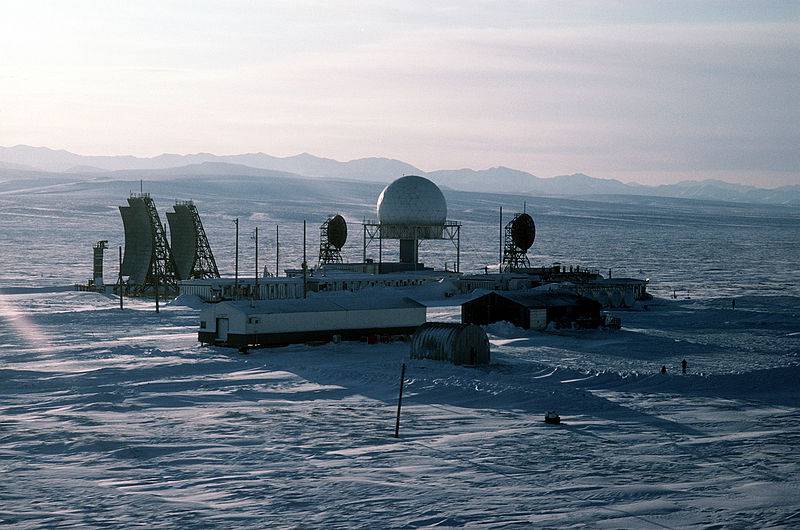
About fifty Tu-16 are attacking Alaska and northeastern Canada. Their goal is the so-called DEW-line - a network of radars interconnected by automated communication systems. Bombers Tu-16 trying to counteract interceptors F-102 and F-106. The Americans use MIM-14 Genie unguided air combat missiles with a nuclear warhead W25 with 1,5 kt power and a launch range of 10 km. Undermining the warhead was carried out by a remote fuse, triggered immediately after the completion of the rocket engine. A warhead blast is guaranteed to destroy any aircraft within 500 radius. In addition to unguided nuclear missiles, aviation-controlled AIM-26 Falcon with nuclear warheads are also widely used. However, the Gini and the Falcons did a disservice: after the destruction of the first few links of the Soviet bombers, the interceptor radar and guidance stations were blinded, and the radio link was also disrupted, and the effectiveness of the fighter aviation dropped sharply.
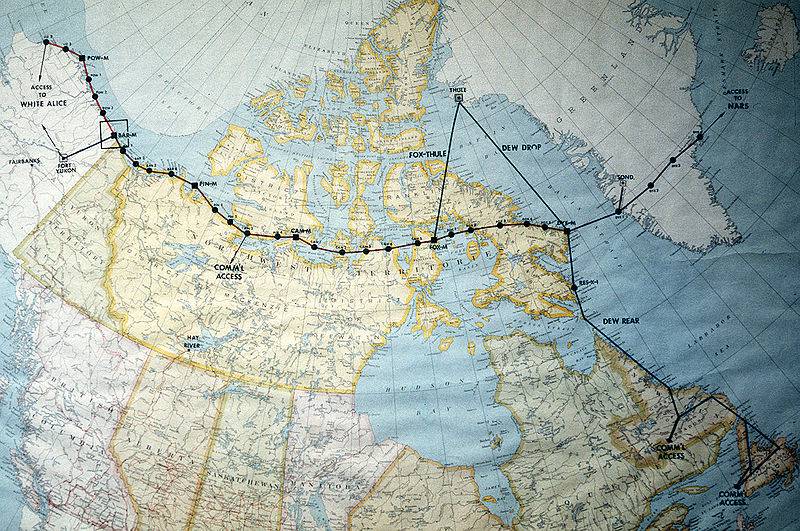
As a result, the goal has been achieved, the Soviet first-wave bomber manages to disrupt the performance of the US-Canadian air defense system. As a result of nuclear explosions over Dutch Harbor and Anchorage, key radars and communication lines were disabled.
Important US facilities in Japan and South Korea are being bombarded by nuclear weapons. Soon, the DPRK troops are moving 38 parallel and are beginning to move towards Seoul. Taking advantage of the fact that the Americans can no longer protect their ally, the PLA forces are hastily preparing to capture Formosa. The Chinese H-5 (IL-28) and H-6 (Tu-16) bombers are bombing objects in Taiwan. Generalissimo Chiang Kai-shek, realizing that he alone will not be able to restrain the landing of the communist Chinese troops on the island, appeals for help to the United States. The Americans send several deck A-3, which destroy the coastal airfields of the PLA Air Force with nuclear bombs. After that, Mao Zedong has no choice, and he joins the USSR in hostilities against the United States. As a result, the multimillion Chinese army once again gets involved in the war on the Korean Peninsula, and several Tu-4 piston bombers are trying to bomb the forward Clark Air Force Base in the Philippines and Singapore. Planes approaching the Philippines were shot down by American fighters, and the raid on Singapore, where British and American warships are being repaired and replenished, is reflected by the fire on the RIM-2 "Terrier" and "Bloodhound." Mao Zedong demands from the Soviet leadership nuclear weapon, modern interceptors and anti-aircraft missile systems. But the Soviet leaders are clearly not in a position to assist the PRC. The nuclear conflict is in full swing, and the Chinese receive only assurances that assistance will be provided as soon as possible.

Following the Tu-16, Soviet "strategists" take to the air. In the first wave, the Tu-95K missile carriers, armed with X-20 supersonic missiles with a launch range of 600 km, go along the shortest path across the polar latitudes to the North American continent. The X-20 rocket developed speed up to 2M, carried a thermonuclear warhead with a power of 0,8-3 Mt and was intended for the destruction of large area targets. However, at the first stage, the X-20 were aimed not at cities, but at airfields of interceptors and famous control centers of the US air defense system. Such tactics have largely borne fruit. Losses among the missile carriers TU-36K that participated in the first 95 raid did not exceed 25%. American interceptors managed to shoot down only 16 cruise missiles, one more missile fell due to technical problems, and as a result, the target hit 19 thermonuclear X-20. The breakthrough of the Soviet missile-carriers is facilitated by the fact that the Greenland airbase at Thule, where the F-102 332 interceptor squadron was based, was neutralized by the Р-13 missile launched from the Soviet diesel-electric submarine Ave. 629.
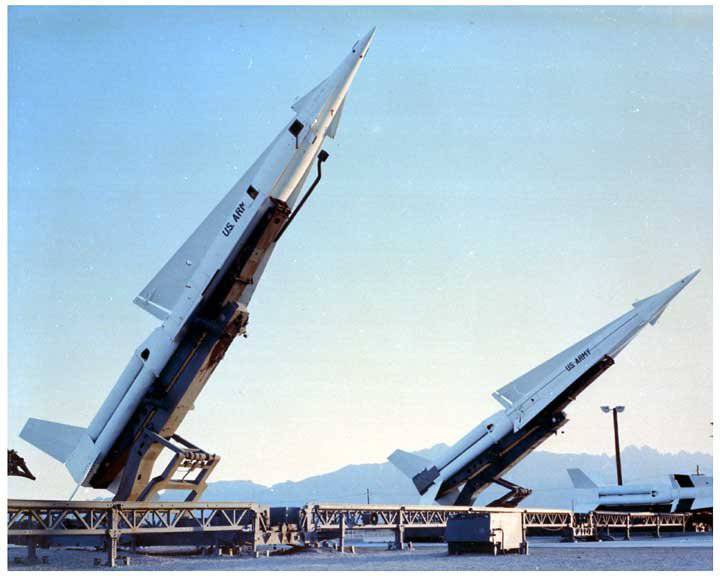
In the second wave, the United States and Canada attacked the Tu-95, 3M, and M-4 bombers, carrying mostly free-falling thermonuclear bombs. In 1962, the air defense of the North American continent, along with the F-89, F-101, F-102, and F-106 interceptor fighters, was made up of the NIM-3 NIMX, NIMX-14 Nike-Hercules and the CIM unmanned interceptors CIM-10, and the CIM unmanned interceptors CIM-100 and Nike-Hercules unmanned interceptors "Bomark". The Canadian and US air defense systems were considered the most powerful in the world, but they could not prevent the destruction of American cities in the heat of thermonuclear explosions. Practically 2% of the Nike-Hercules anti-aircraft missiles and the Bomark long-range unmanned interceptors were equipped with nuclear power from 40 to XNUMX kt.
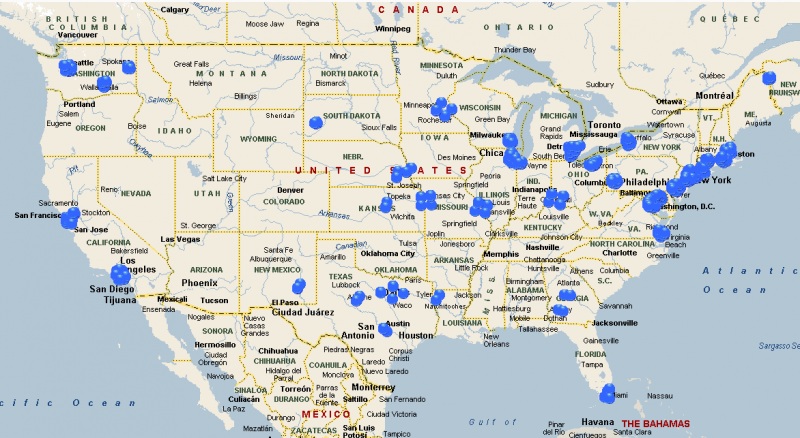
American generals believed that this would increase efficiency against group targets in difficult interference conditions. However, just as in the case of the Gini and Falcon aircraft missiles, after the aerial nuclear explosions, extensive “dead zones” were formed that were inaccessible for viewing by radar. Powerful electromagnetic pulses had the most negative impact on the performance of surveillance radars and communication lines. As a result of strikes with cruise missiles and the effects of dozens of nuclear explosions of combat units of their own aviation and anti-aircraft missiles, the effectiveness of air defense decreased to a critical level and more than half of the Soviet bombers, operating mainly in triples, managed to hit the intended targets.
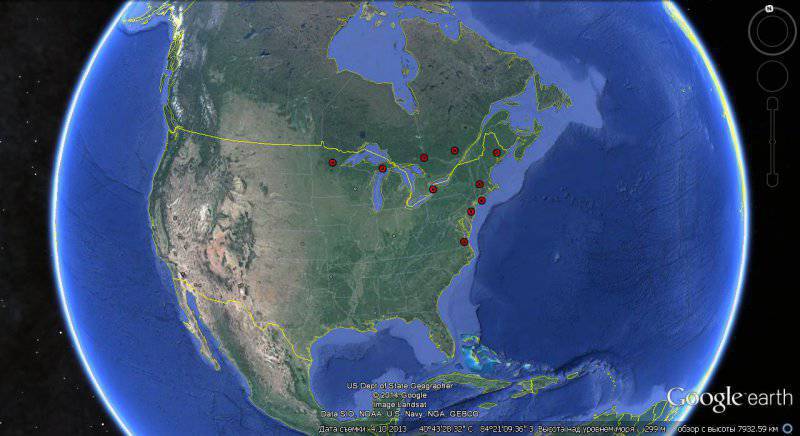
Absolutely not justified hopes pinned on him costly unmanned interceptor "Bemark." Launchers of this complex, administered by the US Air Force, were located in the northwestern United States and in Canada, in the way of the most probable breakthrough of the Soviet bombers. The interception range of this complex reached 800 km. For targeting an unmanned interceptor with a nuclear warhead flying on a marching segment at 3M speed, the global interceptor targeting SAGE was used.
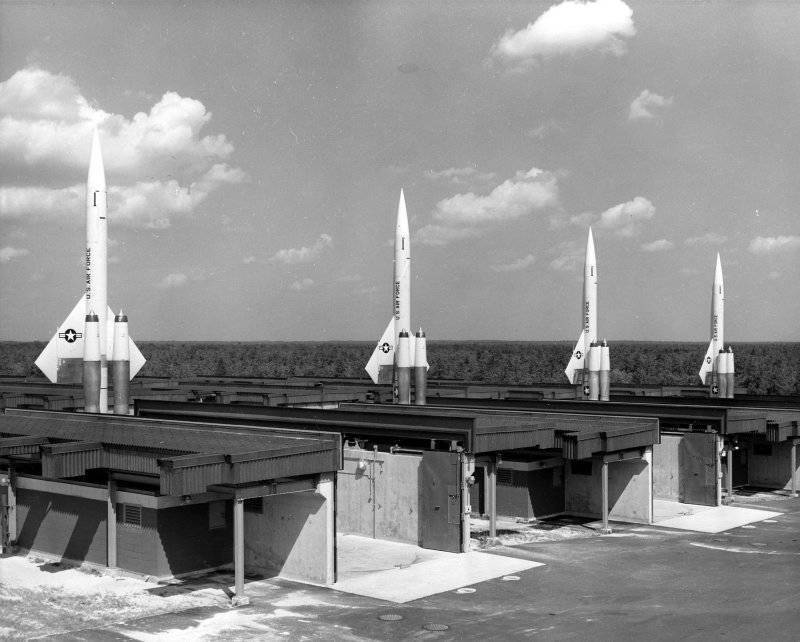
According to the information received from the NORAD radar, the SAGE system automatically processed the data of the locators, and transmitted them to the relay stations via cables laid underground, near which the unmanned interceptor flew at that moment. Depending on the maneuvers of the target, the direction of the interceptor’s flight in this area could change. The autopilot received data on the coordinates of the air target and corrected the direction of flight. When approaching the target at a distance of 20 km, the radar homing head was activated by a command from the ground. However, as a result of a nuclear attack, a significant part of the NORAD system radars and the whole SAGE interceptor automated guidance system was inoperable. Under these conditions, “Bomark” became practically useless. As a result of six launches of interceptors located in Canada, it was possible to destroy one of the first-wave Tu-95Ks and two X-20 cruise missiles.
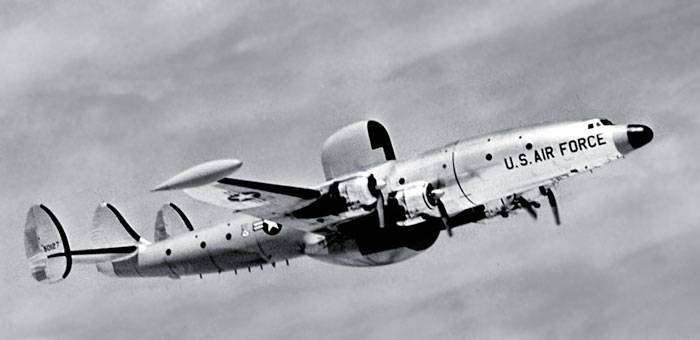
The US Air Force Command is trying to restore the broken information field by sending to the lines of interception of three dozen DRLO EC-121 Warning Star aircraft. However, due to the confusion and disturbed channels of communication, several American DRLO aircraft were mistaken for Soviet bombers and shot down.
On the second or third day of the conflict, the intensity of the mutual exchange of nuclear strikes decreases. This is due to the depletion of ballistic missile stocks and a reduction in the number of long-range bombers as a result of losses. Most American missile boats have already been shot off, and the Soviet armed R-13 SLBMs with a range of 650 km, for the most part, have not yet reached the launch areas. As they arrive from the storage bases, the launch of the ICBMs continues. So, from the launch sites near Plesetsk at the Norfolk naval base and Patterson Air Base, where NORAD was headquartered, two P-7 were launched. As a result of the launch of four P-12 from the standpoint of the 178 rocket regiment based in the Caucasus in the suburb of Ordzhonikidze, along with 11 American bombers, the Turkish airbase Inzherlik and the port of Izmir were destroyed, where American combat ships went to replenish supplies. The launch of the BRSD in North Ossetia came as a surprise to the Americans, since the 178 th missile regiment was successfully disguised as an aviation training unit. Also, in terms of facilities in Turkey, from the standpoint of the 84 rocket regiment stationed in the Crimea, despite the fact that this area was attacked by the Jupiter detachment air regiment, it was possible to launch two P-5 missiles. A single rocket of the P-14 433 rocket regiment stationed in Ukraine destroyed Aviano's airbase in Italy.
American strategic aviation continued its raids, now mainly B-52 participated in nuclear bombardments. B-47 bombers suffered heavy casualties, and the surviving Stratodzhety operated mainly in the Eastern Bloc countries, moreover, as a result of attacks by Soviet MRBMs and Tu-16 jets on targets in Europe, most of their air bases were disabled. Ultrasonic B-58 demonstrated low technical reliability. Many "Hustler" crashed or failed to perform a combat mission due to malfunctioning avionics and engine failures. In the next few days, Stratofortress’s targets were Soviet facilities outside the Urals, in the Caucasus and in Central Asia.
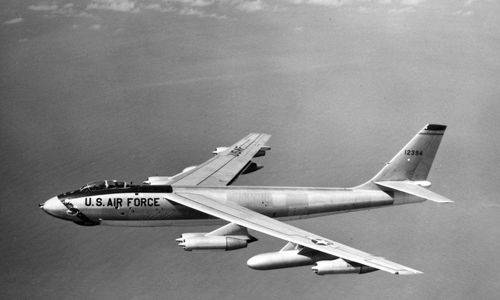
As a result of the failure of the guidance system of the American ICBM, the airfield near Poltava survived. After performing combat missions, a part of the Tu-16 redeployed to the aerodromes of dispersal and the M-4 and 3М strategists from Engels returned here. For a number of reasons, difficulties arose with the preparation for repeated combat sorties of bombers participating in strikes on the North American continent, and Soviet bombers took part in October sorties 29-30 of October. These were mainly Tu-19, which were in reserve; now the aircraft operate alone and in pairs.
After the entry of the PRC and the DPRK into the war, the American strategic aviation makes thermonuclear bombs the ruins of Beijing and Pyongyang, as well as a number of other Chinese and North Korean cities. Two C-75 air defense systems deployed near Beijing succeed in hitting two B-47 bombers, but after the bomber disguised by interference dropped a hydrogen bomb on the command center of the Chinese air defense system near Beijing, the American strategic aviation began to operate almost unhindered. The J-6 Chinese fighter jets managed to shoot down and seriously damage several returning bombers, but this no longer played any role. A fierce air battle between Chinese and Kuomintang fighters broke out over the Taiwan Strait. In combat, the MiG-15, MiG-17 and F-86F came together. More modern J-6 and F-100 sides were kept in reserve. Through the use of guided missiles air combat AIM-9 Sidewinder and the best training of pilots, the Taiwan Air Force managed to level out the numerical superiority of the PLA Air Force and prevent the conquest of superiority in the air.
In order to assist its ally, the US Navy command sent the cruiser “Los Angeles” (CA-135) to the coast of China, which launched two cruise missiles “Regulus” with W27 megaton warheads on Chinese coastal targets. After China was subjected to another series of nuclear strikes, Mao Zedong once again appealed to Khrushchev for help. The outbreak of war with the United States smoothed the ideological differences that had arisen by that time, and the Soviet leadership found it possible to transfer to the Chinese 36 fighter jets MiG-15bis, 24 jet bomber IL-28, 30 outdated Tu-4 piston bombers. To protect the coast, two battalions of the Sopka coastal missile systems were delivered. This assistance could be considered symbolic, especially since the C-75 air defense system, which the Chinese urgently needed, was not delivered, if not for one circumstance. Together with the Il-28 jet bombers in the PRC, they sent 6 tactical atomic bombs RDS-10. Aircraft with nuclear weapons ruled by Soviet crews, the maintenance of bombs and preparation for use carried out by Soviet experts. In addition, October 30 flew to the south-east of the PRC a combined regiment of bombers and missile carriers Tu-16 flew. These aircraft, controlled by Soviet pilots, received orders from the USSR and did not obey the Chinese command.
In the evening of October 30, after the MiG-17, J-5 and J-6 fighters linked up the Taiwanese Super Saybry, the Il-28 bombers dropped two atomic bombs on Taiwan. The next morning, the landing operation of the Chinese troops on Formosa began, and three days later the resistance of the Kuomintang troops was broken. Closer to midnight, the Soviet Tu-16A and Tu-16K-10, taking off from the hop-and-shoot airfield on Hainan Island, finally destroyed the already partially destroyed American bases Clark and Subic Bay in the Philippines. The first to go were the rocket carriers, which, by launching air-launched cruise missiles, the DAC-2 with megaton warheads, neutralized American air defense in the area.
Продолжение следует ...
Based on:
//ns2.fmp.msu.ru/assets/files/theCaribbeancrisis.pdf
//alternathistory.com/karibskii-armageddon-chast-i
//alternathistory.com/sootnoshenie-yadernykh-sil-ovd-nato-na-moment-karibskogo-krizisa
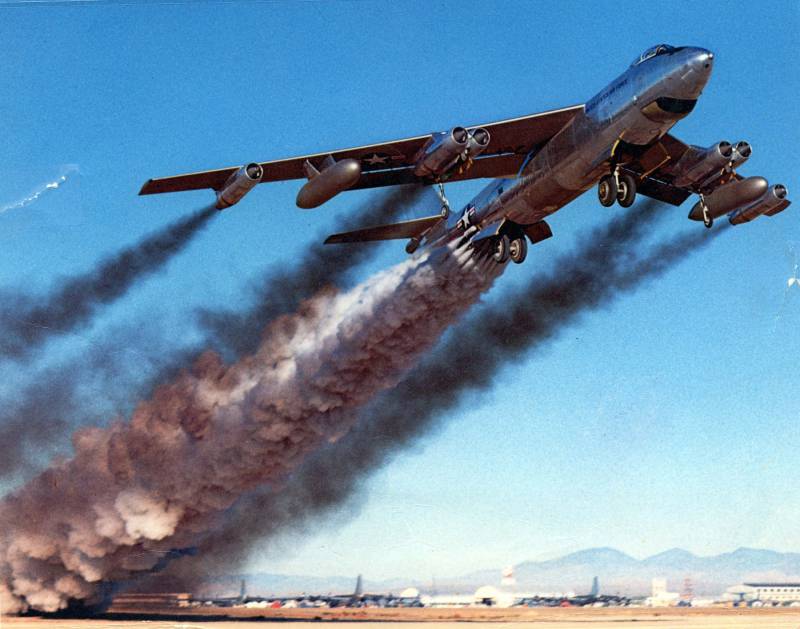
Information